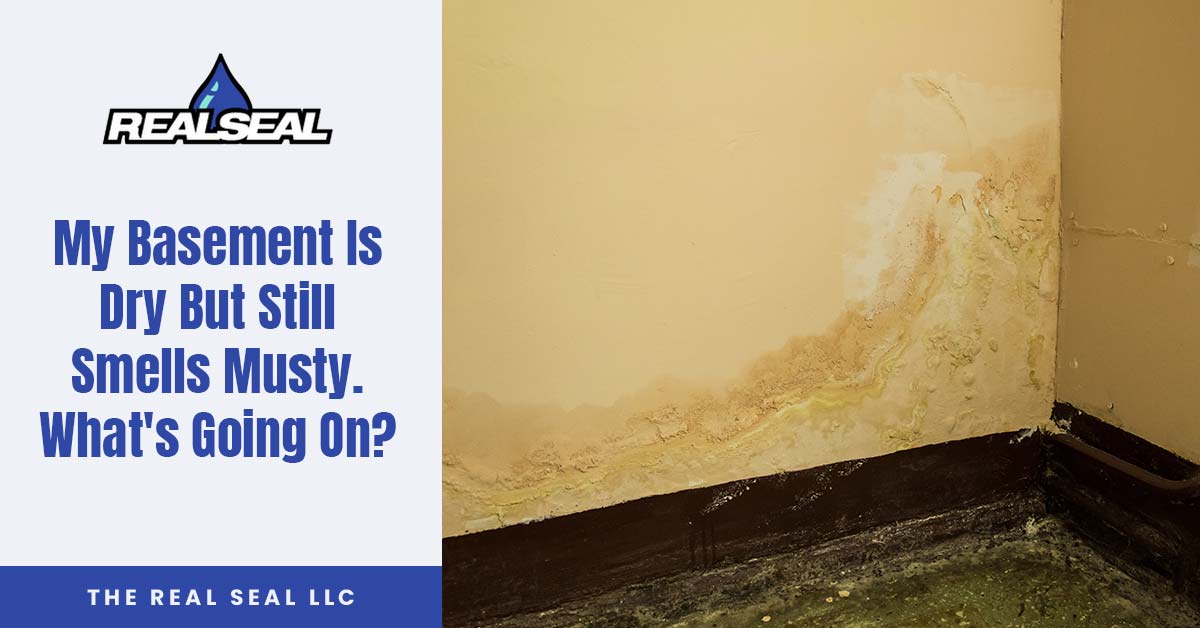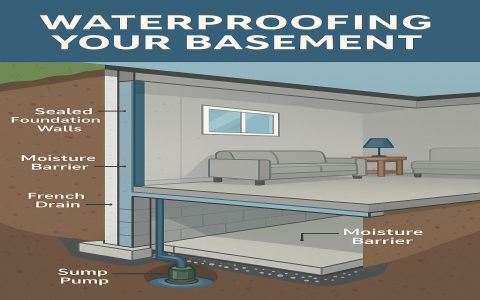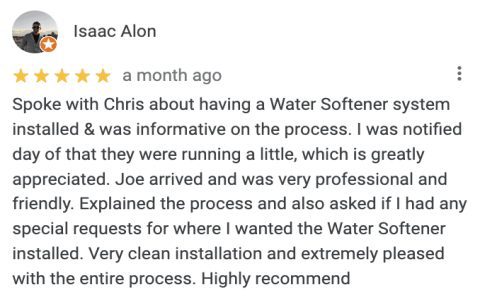Even if your basement feels dry to the touch, a persistent musty odor typically indicates the presence of Microbial Volatile Organic Compounds (MVOCs). These are off-gases produced by mold and mildew. While active water might not be apparent, the smell can linger from previous moisture issues or from hidden sources.
Common Causes for Musty Smells in a Dry Basement
- Past Mold Growth: Mold may have grown during a previous period of dampness. Even if the area is now dry, dormant mold spores or the byproducts of dead mold can continue to release MVOCs. These can be embedded in porous materials like drywall, wood, or concrete.
- Hidden Moisture: Small, intermittent leaks (e.g., foundation cracks that only seep during heavy rain, minor pipe condensation, or high humidity that has since dissipated) can support low levels of mold growth behind walls, under flooring, or in insulation.
- Poor Ventilation: Stagnant air allows MVOCs and other odors to concentrate. Basements often lack adequate air exchange with the outside or other parts of the house.
- Odor-Absorbing Materials: Porous items like carpets, upholstered furniture, stored cardboard boxes, old fabrics, and even unsealed concrete can absorb and trap musty odors over time.
- High Relative Humidity (Even if "Dry"): While the surfaces might feel dry, the air itself could have had periods of elevated relative humidity (above 60-70%) sufficient to allow some mold or mildew activity, the byproducts of which still smell.
Addressing the Musty Odor
Identifying and eliminating the source is key.
- Thorough Inspection:
- Look for any signs of past or present water intrusion: stains, discoloration, peeling paint, efflorescence (a white, powdery substance on concrete or masonry).
- Use a moisture meter to check walls, floors (especially near exterior walls and under pipes), and any suspected areas.
- Improve Air Circulation and Ventilation:
- Use fans to keep air moving.
- Open windows when outdoor humidity is lower than indoor humidity.
- Consider an air purifier with both a HEPA filter (for spores) and an activated carbon filter (for MVOCs/odors).
- Ensure any existing ventilation, like bathroom exhaust fans that vent outside, is working.
- Control Humidity:
- Run a dehumidifier to maintain relative humidity below 50-60%. Even if the basement feels dry, a dehumidifier can remove residual moisture from the air and materials.
- Clean and Deodorize:
- Clean hard surfaces with an appropriate antimicrobial cleaner. For significant past mold, professional remediation might be needed.
- HEPA vacuum all surfaces, including carpets and upholstery, to remove mold spores.
- Wash or professionally clean fabrics, curtains, and stored textiles.
- Consider removing and replacing porous materials that have absorbed odors, like old carpeting or affected drywall, if cleaning is ineffective.
- Use odor absorbers like activated charcoal or baking soda in problem areas.
- Check Drains: Ensure floor drains and any unused plumbing fixtures have water in their P-traps to prevent sewer gases (which can sometimes smell musty) from entering.
When to Call a Professional: If you cannot locate the source of the odor, or if you suspect widespread hidden mold, it's advisable to contact an indoor air quality specialist or a mold remediation professional for a thorough assessment.











